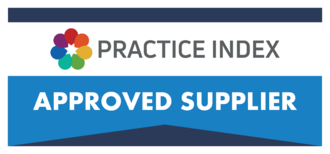Defibrillators - How You Can Save a Life

Every year more than seven million people globally suffer from a Sudden Cardiac Arrest (SCA) with no warning. And only five to 10% of those affected actually survive.
Sudden Cardiac Arrest (SCA) is when the heart enters a chaotic rhythm. It usually results from a disturbance in your heart that disrupts its pumping action, stopping the blood flow to the rest of your body. It’s a medical emergency that if not treated immediately, can cause Sudden Cardiac Death.
The symptoms of an SCA are immediate and include:
- Sudden collapse
- No pulse
- No breathing
- Loss of consciousness
Anyone, anywhere at any time can be affected by an SCA. However, there are risks that can increase the likelihood of them occurring, including smoking, high blood pressure and a family history of coronary artery disease.
What is a defibrillator?
According to the British Heart Foundation, a defibrillator is:
“...a device that gives a high energy electric shock to the heart through the chest wall to someone who is in cardiac arrest.”
The “shock” is called defibrillation, and it’s a lifesaving step in the chain of survival.
The most frequent heart rhythm witnessed during an SCA is ventricular fibrillation (VF), and the only treatment to overcome this is defibrillation. For every minute that passes between collapse and defibrillation, survival rates from a VF SCA decrease from seven to 10%. However, when early and effective bystander CPR is provided, survival rates can double or triple. This highlights the importance of fast defibrillation coupled with effective CPR as key links in the chain of survival for SCA sufferers.
Who should have a defibrillator?
There is no UK legislation that obliges businesses or premises to have an AED, but under English law, there can be a liability in negligence for failing to take appropriate safety precautions on your site.
However, The Health and Safety Executive requires businesses to conduct a risk assessment, and if that identifies the need for an AED, the HSE recommends that your staff should be fully trained in its use. It’s essential to consider the risks to your workforce and anyone else that visits your premises, to determine whether you should have a defibrillator on site.
Factors that increase the risk of an SCA include:
- An aging workforce - whilst anyone at any age can be struck down by an SCA, the likelihood of one occurring increases with age. Ask yourself “how many people are over the age of 45?” – this can be particularly relevant for industrial or construction environments.
- Urban locations – which make it difficult for emergency responders to reach due to traffic, staircases, escalators and crowds of people.
- Remote locations – which may result in longer response times by emergency medical services.
We recommend that defibrillators are as accessible as possible. This should be a max 90-second brisk walk from any employee. They should be treated in the same way as fire extinguishers, so they should not be locked away in a cupboard, and should be easily accessible to everyone.
The correct defibrillator
There are many alternatives available on the market, so it’s essential that you choose wisely, and the device you select meets all your specific needs and requirements. As it’s important to remember that they are not all the same, and device performance and clinical efficacy vary considerably.
We supply a range of Heartsine defibrillators to suit all requirements, including:
The HeartSine PAD 500P
A semi-automatic defibrillator that is operated by using two buttons. It features clear and simple voice prompts for users, and visual prompts to assist the rescuer in noisy or multi-lingual environments. In addition, the 500P features unique patient-specific CPR feedback which instructs the user to push harder, faster, slower or reassures you that you’re doing it right.
The HeartSine PAD 350P
A semi-automatic defibrillator that is operated by using two buttons. In addition, it provides audio prompts to users and metronome for CPR timing and features visual representations of how to use the device.
The HeartSine PAD 360P
A fully-automatic defibrillator that is operated by pressing one button. It will deliver a shock after a countdown, which means the user doesn’t have to press the shock button. Similarly to the 350P it has CPR timing audio prompts and visual explanations.
All of our HeartSine defibrillators come with a range of other features and an eight year warranty, the longest manufacturer’s warranty available on the market.
Contact us
if you would like to find out more about our range of defibrillators for your business then please contact our Sales team on 0114 243 3896 or email: enquiries@numed.co.uk

